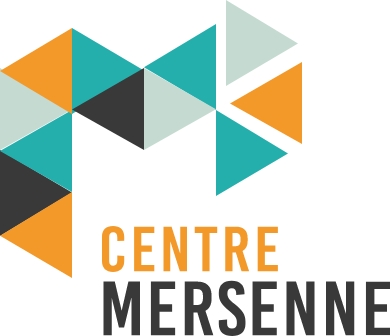1. What is a predatory publisher?
A predatory publisher presents itself as a scientific publisher but its objective is purely commercial. In December 2019, Agnes Grudniewicz et al. published this definition in the journal Nature : “Predatory journals and publishers are entities that prioritize self-interest at the expense of scholarship and are characterized by false or misleading information, deviation from best editorial and publication practices, a lack of transparency, and/or the use of aggressive and indiscriminate solicitation practices”.
“Predatory journals and publishers are entities that prioritise self-interest over scholarship and are characterised by false or misleading information, deviation from best editorial and publication practices, a lack of transparency, and/or the use of aggressive and indiscriminate solicitation practices” (translation Hervé Maisonneuve, blog Revues & intégrité, post of 16/12/2019).
Questionable publishers
Questionable publishers
What student has never received a message emphasising the fundamental interest of their research accompanied by a tempting publication offer? These are print-on-demand companies offering an exclusive contract to publish a scientific production online. Although they are not, strictly speaking, predatory publishers, their practices are nevertheless questionable: signing of exclusive contracts with authors, remuneration of authors from a certain number of sales, no editorial work, payment in vouchers on the publisher’s website, no peer review, etc.
The grey zone
Some publishers, such as MDPI or Frontiers, are considered “grey“: they meet both the criteria of trusted and predatory publishers. With predatory publishers, they share a high acceptance rate for articles, short publication deadlines, etc. However, like trusted publishers, they are members of COPE and OASPA and are present in the DOAJ.
For more information:
https://ist.blogs.inrae.fr/questionreponses/2020/05/27/publier-ou-ne-pas-publier-dans-les-editeurs-de-la-zone-grise-comme-mdpi-ou-frontiers/
https://www.unige.ch/biblio/fr/openaccess/editeurs-predateurs/
https://www5.bibl.ulaval.ca/services/redaction-et-citation/redaction-de-memoires-et-de-theses/mise-en-garde-editions-universitaires-europeennes-et-presses-academiques-francophones
https://ist.blogs.inrae.fr/questionreponses/2019/03/19/editeur-mdpi/
https://www.redactionmedicale.fr/2021/11/fortement-recommande-eviter-les-revues-du-groupe-mdpi
In recent years, this open access model has been hijacked by so-called “predatory” publishers: authors are asked to publish in journals in exchange for payment of publication fees. The difference lies in the treatment of publications: no peer review, false claims of non-existent scientific visibility, spam… The sole objective in this case is to make a profit. These publishers therefore do not review submissions and publish a maximum number of articles.
Hijacking the golden path
The “golden route” in Open Access refers to the “author pays” model in which the author pays a publication fee in order to make his or her article accessible to all on the publisher’s website. Proposed by major scientific publishers, this model allows researchers to disseminate their research widely while benefiting from the publishing quality of a scientific journal (peer review, editorial quality, visibility, etc.).
For more information:
https://predatory-publishing.com/
https://www.nature.com/articles/d41586-019-03759-y
https://coop-ist.cirad.fr/publier-et-diffuser/eviter-les-revues-et-editeurs-predateurs/liens-utiles
https://ist.blogs.inrae.fr/questionreponses/focus-sur/les-editeurs-predateurs-le-cote-obscur-de-lopen-access/
https://www.redactionmedicale.fr/predateurs
2. What are the risks of publishing in a predatory journal?
On the face of it, you might think that publishing in a predatory journal is not so bad: you just lose a little money… But not only that! Because they do not offer real peer review, predatory publishers publish without scientific guarantees. Thus, publishing with a predatory publisher can:
- taint a CV by publishing in a journal without peer review
- hinder the dissemination of a researcher’s articles as they will not appear in scientific databases (false claims of indexing by predatory journals)
- cause legal problems related to intellectual property if you sign a copyright assignment contract for commercial use without having obtained the agreement of all your co-authors, illustrators, photographers…
3. How to recognize them?
Predatory publishers do everything to resemble a serious scientific publication: website, editorial board, submission form, list of databases in which the journal is indexed, etc. To protect yourself, it is important to remain vigilant, to be informed and to acquire the right reflexes.
The good reflexes
Here are a few clues for spotting a non-legitimate journal listed by the Science ouverte site of the University of Rennes 1:
- “Invitation to publish sent by email to the researcher (spam).
- Non-professional contact email address (such as gmail).
- Manuscripts must be submitted by email.
- Journal that promises extremely fast publication.
- No transparency on peer-reviewing.
- No transparency on publication fees (APC).
- Modest publication fees (e.g. less than $150).
- Access fees or embargo on dissemination.
- Incorrect spelling and grammar (site or message).
- Incorrect impact factors (see Journal of Citation Reports)
- The journal’s website features a Copernicus Index.
- Lack of a retraction policy”.

These criteria are neither exhaustive nor necessary. The predatory journal usually meets several negative criteria, but not necessarily all: the aim is to pass itself off as a genuine scientific journal…
See also:
https://scholarlyoa.com/criteria-for-determining-predatory-open-access-publishers-2nd-edition-2/
The tools
The first reflex to acquire is to remain vigilant. However, there are tools to help you assess the quality of a publisher or journal.
Lists of publishers and journals
Several lists exist: those that list predatory journals, those that list trusted journals, free lists, paid lists… The best known, and also the oldest of all, is Jeffrey Beall’s list. Closed in 2017 due to pressure, it listed predatory open access publishers. An archive of this list still exists at the following address, updated anonymously by a researcher

After the closure of Jeffrey Beall’s site, two lists were created by the Cabell company: one list of trusted journals, verified by their teams, and the other of predatory or questionable journals. These lists are not free.
On the other hand, the DOAJ publishes lists of journals added and removed from the platform.
But beware: the lists of journals are not exhaustive! Just because a journal is not blacklisted does not mean it is a trusted journal… Lists can thus be misleading and, while they are a quick verification tool, they cannot be the only verification tool.
Blogs and sites
There are many blogs and sites that feature articles or feedback on predatory publishers. They provide an insight into the practices of predatory publishers: examples of messages, new forms of predation, controversies…
For example, the Predatory Publishing site presents a totally abstruse conversation with a possible predatory publisher in which an author asks the editor a question.
The blog Flaky academic Journals presents numerous examples of dubious journals and analyses their degree of trust in a very synthetic manner: absence of an editor-in-chief, very short acceptance deadlines, false address, spam… Each analysis is followed by email conversations full of emphatic and obsequious expressions, approximate syntax…
Each issue of Nature offers a reflection on scientific publishing. Numerous articles deal with the theme of predatory publishers: evolution of predatory journals, scientific impact of articles, definition, tools, etc.
The Journals and Integrity website publishes daily information on scientific publishing: predatory journals, peer review, open access… They provide advice and tools to fight against predatory publishing.
Think Check Submit
DOAJ, INASP, ISSN, LIBER, OASPA, STM and UKSG have joined forces to create the Think. Check. Submit.. Each step of the tool provides a list of questions to ask yourself to determine the quality of the journal.
Sample questions:
- Do you or your colleagues know the journal?
- Can you easily identify and contact the publisher?
- Are articles indexed in services that you use?
- etc.
Compass to publish
The University of Liège has created the Compass to Publish tool, which allows you to evaluate an open access journal in a few clicks. A questionnaire guides the user, step by step, in order to determine whether the tested journal is legitimate or not. If one takes the time to check and answer all the questions, this software gives a very clear answer, in the form of a range in which the journal in question is positioned on one side or the other, with possible nuances.
The reflection provided by the tool gradually allows the user to become familiar with the clues and to acquire reflexes when faced with an unknown journal: does the ISSN correspond to the title of the journal? Is the editorial board indicated? Is the journal really indexed in the databases it claims?…
Evaluation grid
The PDCI (Promotion du Développement des Compétences Informationnelles) is a structure working with the University of Quebec to ensure that students master information skills. This structure has developed a very complete evaluation grid to assess the quality of a journal:
Access to the PDCI page on predatory publishers:
Direct access to the evaluation grid:
4. How to recognise a trusted journal?
It is also good to know how to recognise a trusted journal. A few clues may help you to do so:

- The editorial board members are listed on the journal website, with their affiliations and can be contacted.
- The peer review process is specified: single-blind, double-blind, etc.
- Publication fees are indicated on the journal’s website.
- The journal is listed on the databases it promotes on its website. For example, if a journal advertises its presence on Scopus, it is a good idea to check whether it is really indexed there.
For more information:
https://coop-ist.cirad.fr/publier-et-diffuser/eviter-les-revues-et-editeurs-predateurs/1-qu-est-ce-qu-une-revue-predatrice-ou-un-editeur-potentiellement-predateur
https://thinkchecksubmit.org/
https://predatory-publishing.com/email-discussion-with-a-possible-predatory-journal/ discussion with a dubious publisher (listed in the Beall’s list)
https://predatory-publishing.com/
https://www.nature.com/articles/d41586-021-02906-8
https://www.redactionmedicale.fr/2020/10/revues-predatrices-un-poster-et-un-depliant-en-francais-a-diffuser-dans-votre-environnement
https://www.redactionmedicale.fr/?s=pr%C3%A9datr
http://flakyj.blogspot.com/ blog listing predatory journals, with sample emails
Image credits:
Committee on Publication Ethics, Public domain, via Wikimedia Commons
OASPA, Public domain, via Wikimedia Commons
Directory of Open Access Journals, Public domain, via Wikimedia Commons



